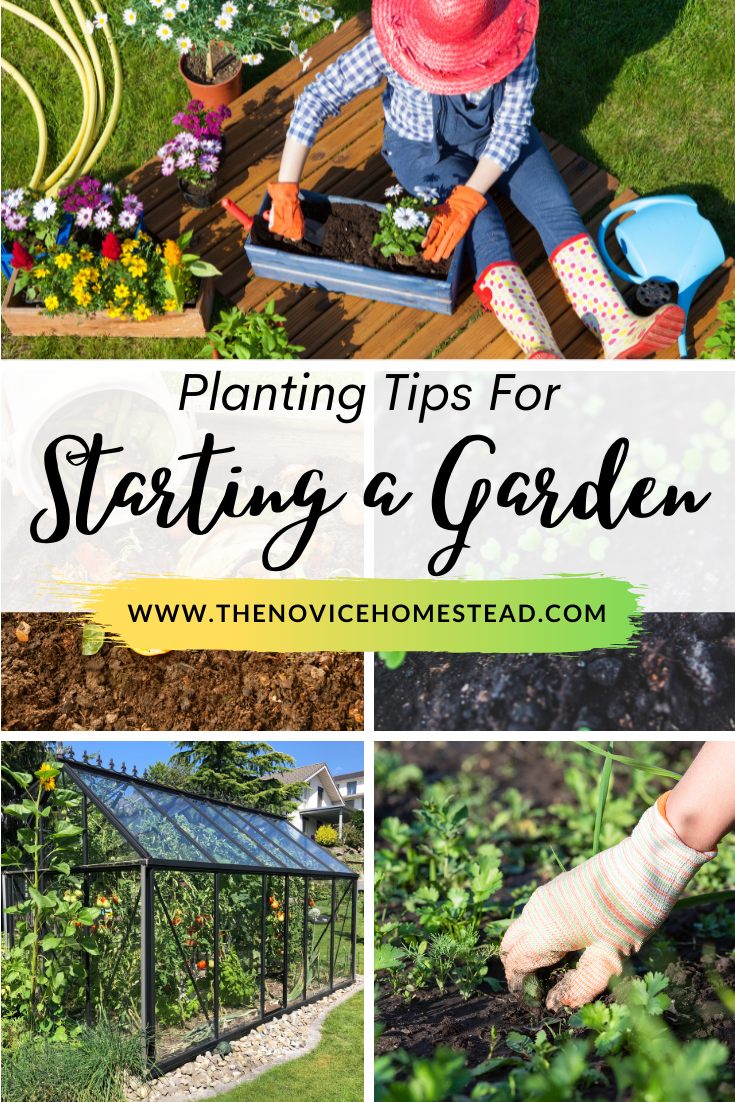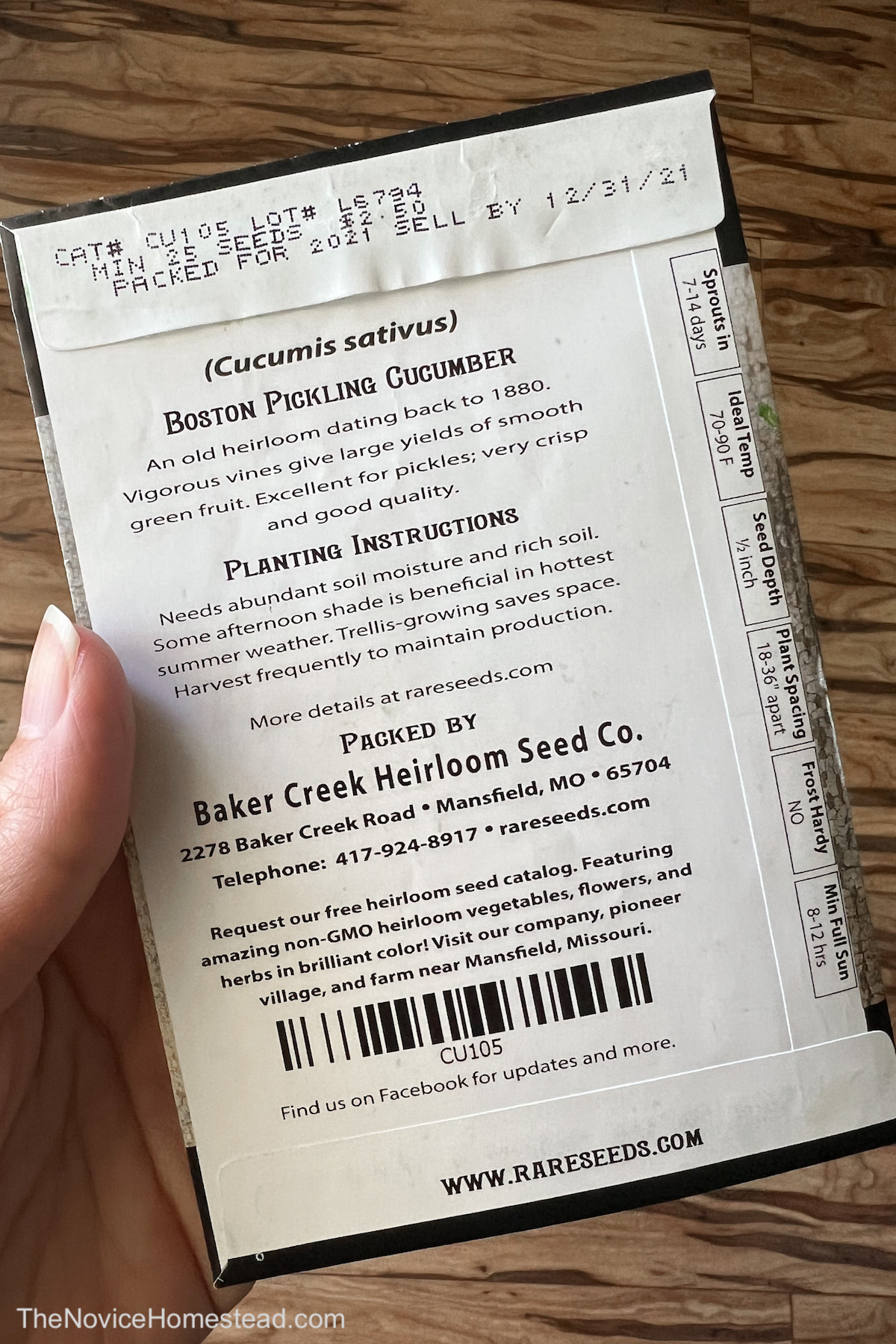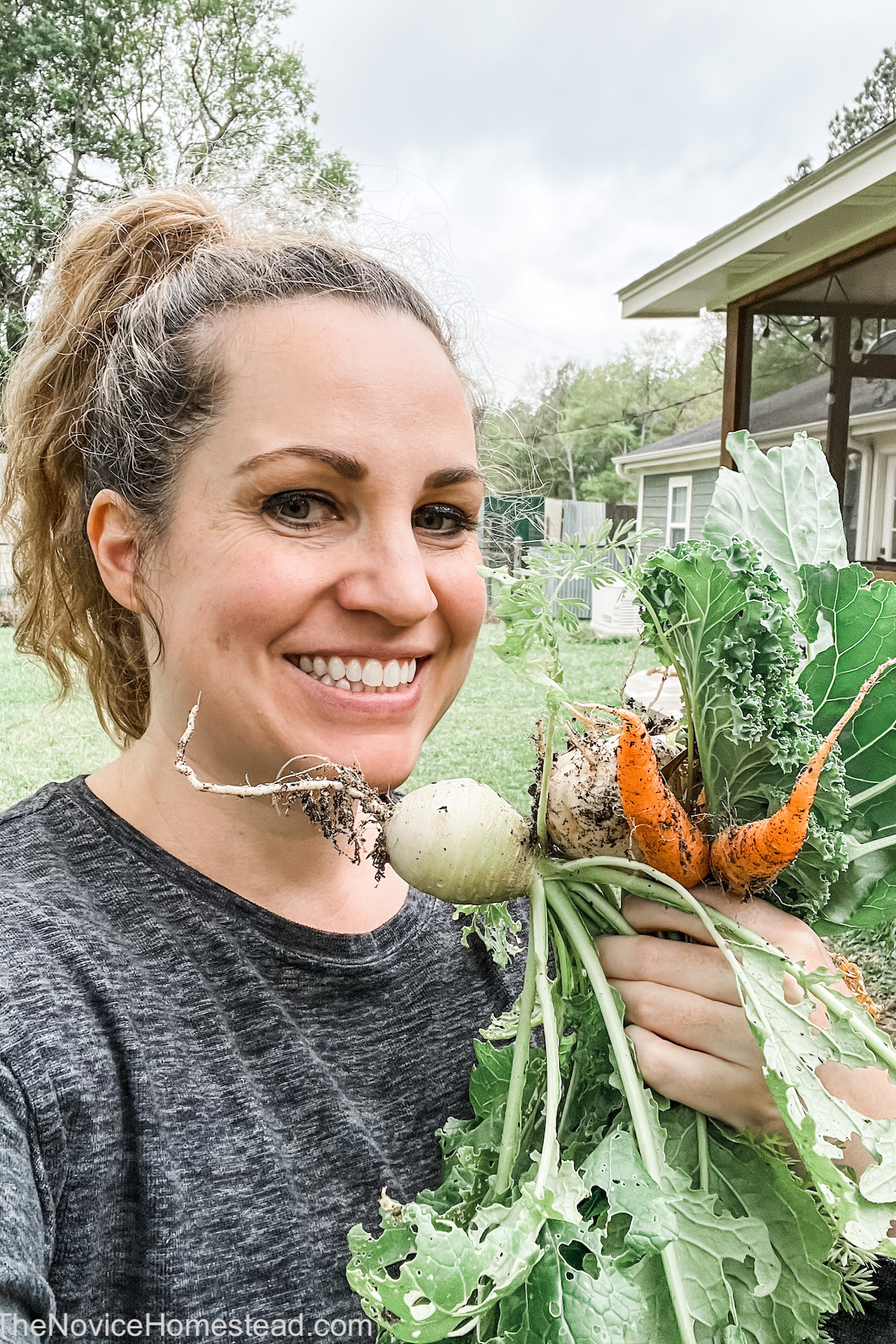Before you plant anything, you’ll want to prepare your garden first. Keep reading for 6 tips to get your garden ready to plant, especially if you’re starting a new garden!

6 Things To Do Before You Plant Your Garden
When it comes to starting a garden, there are specific planting tips to keep in mind. For the health of your garden, it’s essential to do what you can to allow your seeds to thrive and grow. Before you just start tossing your seeds into the ground, find out how to best plant for the best possible outcome. The more you can start off on the right foot for your garden, the better! Here are some great planting tips for starting a garden the right way.
1. Choose Your Garden Location
If this is your first time gardening, you have to choose where to put the garden. It sounds simple enough, but there’s more to starting a garden than just tilling the dirt and putting in seeds.
Before you break ground, take a little time to observe potential garden locations on your property. The most important things to watch for are full sunlight and well-draining soil.
Ideally, you’d want to see how your potential garden spot fares throughout all four seasons. Of course in reality, that can be a long time to wait when you’re ready to start planting right away!
Here are a few main factors to consider before you choose a location for your garden:
- Sunlight – Does it get at least 6 hours of full sunlight year-round?
- Drainage – What happens to the soil when it rains? Does the water drain in a reasonable time or does it pool and create areas of standing water?
- Accessibility – Is the area you’re considering close enough that you can get to your garden without a long hike? Is it close enough to a water source so you can irrigate when there is no rain?
- Other – Are there outside factors that could affect your garden? For example, if you place your garden next to a neighbor’s field, you may end up with runoff if they spray pesticides.
If you moved into a house that already has an established garden (like we did), it’s still a good idea to observe before you commit to gardening in that same spot.
2. Prepare The Soil
Before you plant, it’s a good idea to know what kind of soil you’re working with. It’s much easier to amend the soil before there are plants in the way.
In our area, the soil is primarily clay, which is not good for gardening. Clay holds water, so if it rains, your plants could be standing in puddles for too long. That is why I personally decided to garden using raised beds.
If your soil is primarily sand, then it likely drains too much, which means your plants will have a difficult time getting enough water. This type of environment is another good candidate for a raised bed garden.
No matter what kind of soil you have, it is always a good idea to give it a boost by working in compost before you plant. This helps give the soil a well-rounded mix of nutrients.
You can also purchase soil test kits to find out exactly what is in your soil so you can make the best decisions about how to proceed.
Once you’ve got your soil composition situated, you’ll want to till the soil a bit to loosen it up and work the compost or other organic materials into it. This is also the time to remove as many weeds as possible. I find it much easier to get them all out before I put in my garden plants! The weeds will return, but you want to at least give your plants a head start.
3. Know What You Can Grow
Once you know where your garden will go and what kind of soil you’re dealing with, it’s time to decide which plants you’re going to grow.
Don’t waste time planting seeds that will never grow in your area. Research your growing zone and find out what will actually sprout. Not all foods and plants can grow in all places worldwide, so educating yourself now can save you time, money, and frustration.
That being said, you will likely still encounter plants that do not grow for you, despite the fact that they supposedly can grow in your climate zone. I always tell people who ask me for gardening tips that my number one tip is to expect some things to fail. It happens to all of us!
After your first year gardening, you’ll have a better idea of the types of plants that thrive where you live, and those that don’t. Here in East Texas, cucumbers and melons are stars of my garden….and for the life of me, I cannot get any kind of beets to grow! So over the years I’ve focused on planting things that do well and I don’t waste a lot of time on things that don’t. Let’s just say I make LOTS of pickles…and my friends and family eat ALL of them by the time the next season comes around!
4. Read The Directions
Most seed packets have planting instructions printed on the back. They may include tips such as when to plant, how deep to place the seeds, and how far apart to space your plants. These tips are put on the package to give you the basic information needed to grow those particular plants.
It sounds like a no-brainer, but it’s so important to know about the plants you want to grow before you get started. That way you can give your plants the best chance for success and maximize your yield.
If the instructions on the seed packets are vague or brief, I would recommend searching online for tips about each specific plant you want to grow in your garden. The more you know, the better!
Planting tips for tomatoes are way different than planting tips for lavender planting tips. Learning how to start a garden the right way is key for present and future success.

5. Decide When To Plant
The weather where you live will determine when you can plant in an outdoor garden. Here in Texas, I can put seeds in the ground at the end of February because it’s unlikely we will have freezing weather after that point. However, where I grew up in West Virginia, it was very risky to plant outdoors until after Mother’s Day.
If you plant your garden too early and then there is a cold snap, all your hard work can go right down the drain. Do your best to pay attention to the weather patterns and look ahead as far as possible. It may be helpful to read the almanac (yes, an old time-y method, but it’s still around for a reason!)
No matter where you live, you may want to start some of your seeds indoors. This allows them to grow for a few weeks before you transplant them and it extends your growing season.
Related: Learn more about starting seeds here, plus over 30 seed starter ideas!
One more thing to think about is that certain plants need to be planted at certain times of the year. Remember #4…read the directions on your seed packets as they will tell you when to plant! For example, kale is a good plant to grow in the fall, while cucumbers thrive in spring and summer. Planting the right seeds for your area won’t do a lot of good if you plant them at the wrong time.
Learn More: 16 Vegetables You Can Grow In A Fall Garden

6. Give Your Garden Attention Every Day
It may sound a little over the top to say that you need to tend to your garden daily, but there is truly always something that has to be done in the garden area. The hotter the weather gets, the more water the plants and seeds are going to need. In the summer, I water at least once a day when it doesn’t rain.
You’re also going to want to pull out any weeds that may pop up as well as keep a close eye out for damaging bugs. A whole entire crop can be ruined overnight by invasive bugs eating around. When it is “caterpillar season” as I call it, I have to check my leafy greens daily and remove the caterpillars. They can do a lot of damage in one day if they’re left to it!
Tips: How To Get Rid Of Snails, Slugs, And Caterpillars
If you live in a wooded area, you’ll have to watch out for rabbits, deer, and squirrels, too. They’ll literally pick your garden clear of any foods in just a few moments flat! A garden fence is a must when you have wildlife.
Learn More: How to Keep Deer Out of Your Vegetable Garden
That being said, not every trip to the garden is a chore! I love going out to pick fresh veggies for each meal. Sometimes I’ll grab a handful of carrots for the girls – their favorite snack is raw carrots! Other times I’ll pick a bowl of greens for dinner. It’s always fun to see what is ripe and ready!
Sometimes I also just go out to my garden because I like being there. It’s ok to just go enjoy your garden, even if you don’t do any work!
More Gardening Tips For Beginners
While they may sound overwhelming, these gardening tips are fairly easy to do. Once you get started, you’ll see that caring for your garden isn’t bad at all. The more that you care for it, the more that it’s going to grow! As with anything, gardening takes practice as well as trial and error. We’re ALL learning, no matter how many years we’ve been gardening!
Here are more posts to learn about starting a garden:
- How to Get Rid of Ants in the Garden
- Natural Pest Repellents for the Garden
- Beginners’ Guide to Starting a Garden
- Banana Peel Water Plant Fertilizer
- What Things Can You Compost?
- How Often Should You Water Your Garden?
- What Plants Can Survive in Texas in Summer?
- How to Grow More Tomatoes
- How to Prune Basil
- Peppermint Oil Spray for the Garden